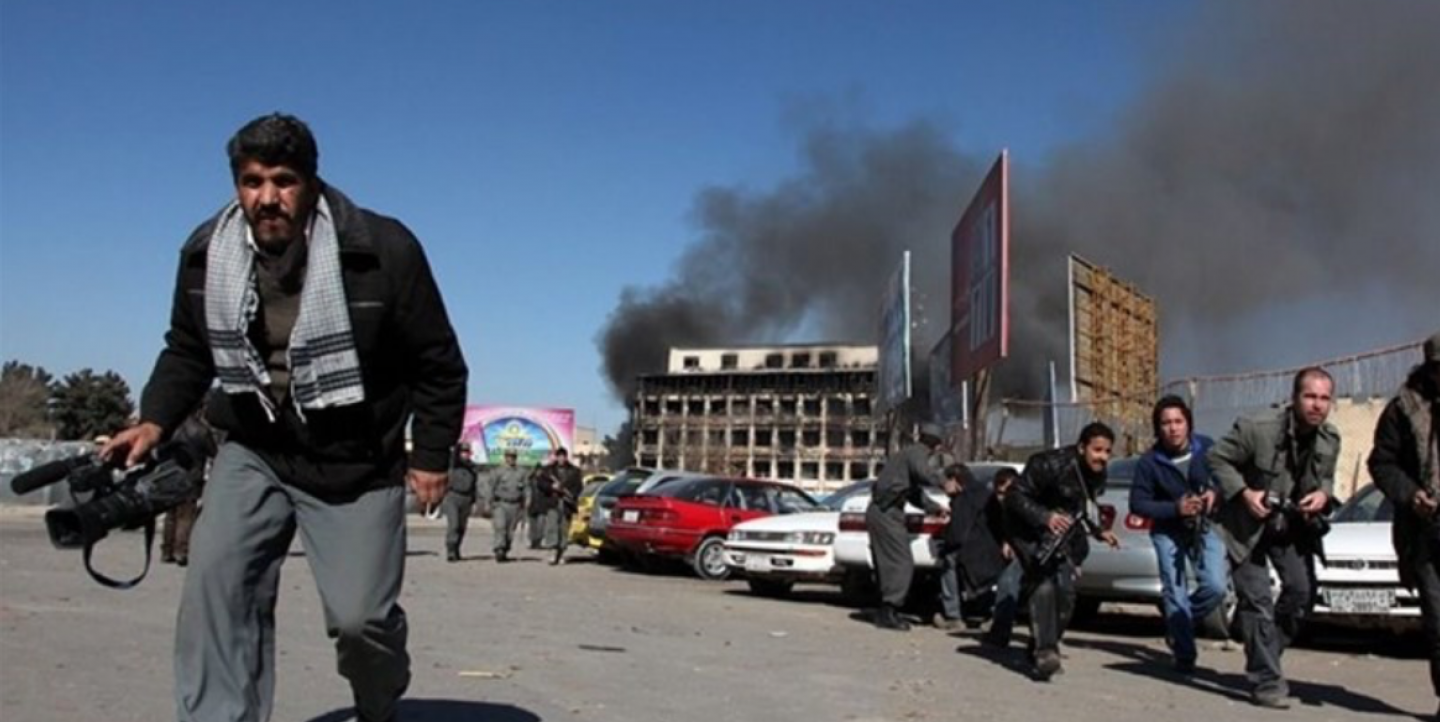Afghanistan is no stranger to turbulent times and disrupted daily life. This is the case once more today.
As U.S.-led forces depart the country, Taliban militants are capturing city after city, and province after province. They’re terrorizing the public, using their residences as military bases, and extorting and killing civilians without an ounce of reluctance or remorse.
For journalists, merely going to work has been frightening. They are among the Taliban’s worst enemies due to the nature of their work, documenting and raising awareness of developments in the country.
Afghanistan has long been a dangerous place for journalists, already. According to Reporters Without Borders, “At least 100 journalists, including 15 international journalists, have been killed in connection with their work in the past 20 years, while more than 60 media outlets have been destroyed or attacked and hundreds of threats have been made against journalists and media.” Since 2018, more than 30 media workers and journalists have been killed in Afghanistan, the United Nations detailed in a report published in March of this year. From September 2020 to January 2021, at least six journalists and media workers were killed in various assassination attempts across the country.
The Nai Media Institute, an NGO that supports free media in Afghanistan, offers maps that allow users to view the available data on violence against journalists.
[Read more: Nicaraguan journalists are targeted under new cybercrime law]
The situation has deteriorated as the Taliban advance across the country. “Hundreds of civilians have been killed and injured in insurgent attacks, including targeted assassinations of journalists and officials,” according to Human Rights Watch. More than 90 media outlets in Afghanistan have closed down, Voice of America reported this week, most in provinces that the Taliban have already arrived at, said Afghan officials cited in the report.
In search of a way out, Afghans who have worked with the U.S. have the opportunity to seek asylum or obtain a U.S. visa through the U.S. Department of State. A group of acclaimed French journalists and filmmakers recently asked the Macron administration to grant asylum to their Afghan peers, and a coalition of British journalists have done the same.
Seeking asylum, however, can be a lengthy, complicated process mired in uncertainty. Even if expedited, it would likely still be difficult for Afghan journalists. Meanwhile, there is little speculation as to what would become of them if the Taliban take over completely. A large number are living and working in fear today, unsure of what fate lies ahead. Most don’t know if they will still have a roof over their heads tomorrow, or where their family’s next meal will come from.
An Afghan journalist speaking on condition of anonymity told IJNet that almost all journalists in major cities are in danger of being targeted and hurt, or even killed by Taliban fighters. “There is little that the Taliban despises more than the free press and freedom of speech,” the journalist said.
According to the source, journalists who are not in hiding are “banging on every foreign embassy’s door” in hopes of obtaining a visa to flee Afghanistan and seek asylum in another country.
Those who have worked as stringers for Western media outlets are desperately asking their foreign employers to write letters of recommendation for them so they can ask embassies for a visa based on those letters, the journalist explained, adding that those who cannot manage to get to the West are heading toward Iran.
[Read more: Reporting the crisis in Myanmar: Lessons from the ground]
The crisis is even more dire for women journalists. They are doubly despised by the Taliban, who are notorious for their violent treatment of civilians, and for prohibiting women from actively participating in society. Women journalists challenge this as they venture outside the four walls of their residence, seeking independence and attempting to make a difference in their own lives and that of their fellow citizens.
For decades, Afghans have been subject to brutality at its worst. They have witnessed the death of their loved ones, lost their hard-earned money to extortion, and seen the destruction of the property they worked years to gain. From foreign invasions to tribal conflicts, they have seen it, lived it, and felt it all.
Alongside the activists and rights organizations, perhaps the rest of us can take steps, each in our way and however small, to open the world’s eyes to the Afghan people’s struggle as they grapple with the latest unimaginable challenges.
The time is now opportune, too, if not overdue, for the world to learn more about the experiences of Afghan journalists — those who are raising awareness about the challenges facing the Afghan people — and do what we can to keep these journalists safe.
Now is the time to tell the story of the storytellers.
The Global Investigative Journalism Network said this Monday it is working with various groups to get other fellow reporters out of Afghanistan: “If you know journalists who need evacuation, send their case to safety@womeninjournalism.org and emergencies@cpj.org.”
International Media Support’s partner Afghan Journalists Safety Committee is looking for funds “to bring journalists to safety and keep independent media outlets operational.” You can donate via this link.
The International Women's Media Foundation is also accepting donations to support women journalists in Afghanistan.
Main image courtesy of Tabnak.ir.
This article was updated on August 16.


